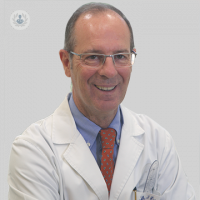New perspectives in ligamentous injuries of the knee meniscus
Written by:Knee sprains are a frequent injury in patients of sporting age. Until a few years ago this concept necessarily referred to young people, but now the perimeter of affectation of people who practice sports has been expanding exponentially and at this moment we can find ligament capsule injuries of the knee from the pediatric age up to old age. The most frequent ligamentous injuries are those of the lateral and anterior cruciate ligaments, which can go alone or accompanied by a meniscal lesion.
These lesions can also be combined, for example a lesion of the anterior cruciate ligament , can be isolated or with injury of the internal lateral ligament and involvement of the internal meniscus , the external or both, are the known triads .

The injury of the internal lateral ligament is always treated non-surgically, at the moment a relative immobilization allows to initiate the rehabilitation in a fast and safe way, in addition it can accelerate this biological process of healing with the help of platelet growth factors infiltrates in the high insertion and in the proximal trajectory of the same, which allows to recover before.
Injuries to the anterior cruciate ligament in young people are usually surgically treated with arthroscopic replacement of the injured ligament with a plasty caught either of the patellar tendon or of the hamstring muscles. In this sense, the advances are coming by the new guides to tunnel the femur, since from the inside of the knee you can make a placement of the plasty in a more horizontal position with better control of anterior laxity, all this helped by the new systems of subjection of the plasties both at the femoral level and at the tibial level allows us to speed up the recovery with less pain and faster. Also in this case new biological contributions in the form of platelet growth factors that reduce postoperative inflammation and favor the integration of the plasty are helpful.
Meniscal lesions can affect both the internal and external meniscus and can be divided into traumatic lesions and degenerative lesions.. The traumatic injuries correspond in general to young people while the degenerative ones are part of the beginning of the aging of the knees .
External meniscal lesions are generally worse prognosis than internal lesions because of the shape of the tibial surface, since this compartment is convex in the anterior-posterior sense, so the meniscus cushion function is more important and more difficult to supply than in the case of the internal meniscus. It is essential to preserve as much as possible of the meniscus , trying to suture all the possible injuries in young people and in the case of older meniscectomies as small as possible to try to protect the joint as much as possible.
In this field there is also important progress since the new materials allow the suture of longitudinal lesions and the suture of radial lesions is started successfully, particularly important in external meniscal lesions of young patients. The new guns with knots all inside and the "mini loops" with different directions have perfected and have given more security to the meniscal repair procedure, keeping in mind that these injuries affect the non-vascular area in most cases and therefore with great difficulty of healing. This is why we also rely on the placement of platelet growth factors within the repaired area in order to make these sutures more viable.
It is this combination of technical progress and proper management of advances in regenerative tissue therapy that will lead to better and more reliable results .


